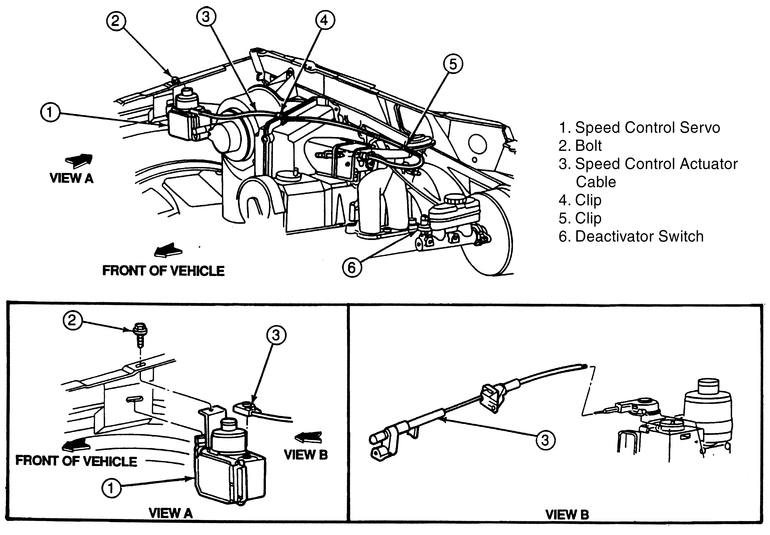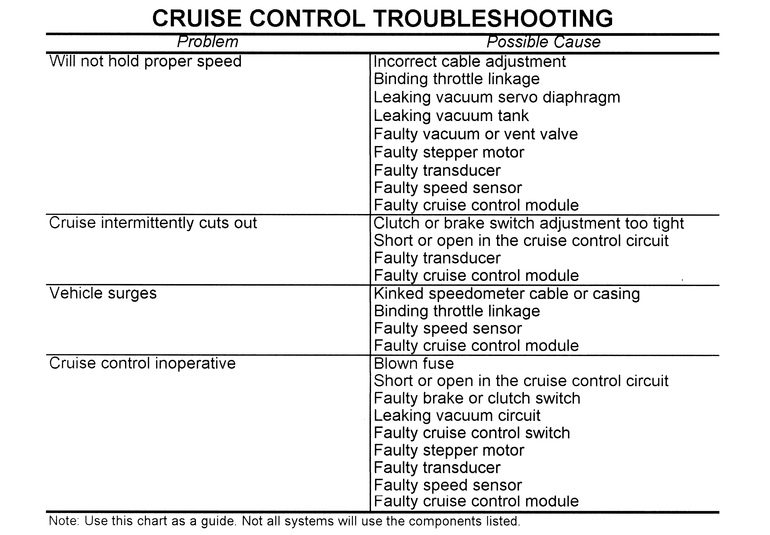Vacuum Systems:
The vacuum controlled cruise control system consists of the following components:
- Control switches
- Servo (throttle actuator)
- Speed sensor
- Clutch switch (manual transmissions)
- Stoplamp switch
- Vacuum dump valve
- Amplifier assembly
The throttle actuator is mounted in the engine compartment and is connected to the throttle linkage with an actuator cable. The speed control amplifier regulates the throttle actuator to keep the requested speed. When the brake pedal is depressed, an electrical signal from the stoplamp switch returns the system to stand-by mode. The vacuum dump valve also mechanically releases the vacuum in the throttle actuator, thus releasing the throttle independently of the amplifier control. This feature is used as a safety backup.
Fig. 1: Vacuum controlled cruise control system components
Electrical Systems:
The electronic cruise control system consists of the following components:
- Control switches
- Servo/control unit (throttle actuator)
- Speed sensor
- Stoplamp and deactivator switches
The throttle actuator/control unit is mounted in the engine compartment and is connected to the throttle linkage with an actuator cable. The control unit regulates the throttle actuator to keep the requested speed. When the brake pedal is depressed, an electrical signal from the stoplamp and deactivator switches return the system to stand-by mode. This system operates independently of engine vacuum, therefore no vacuum lines are required.
Fig. 2: Electronic cruise control system components


Wiring Diagrams:
Here are (2) wiring diagrams that may help as well:
